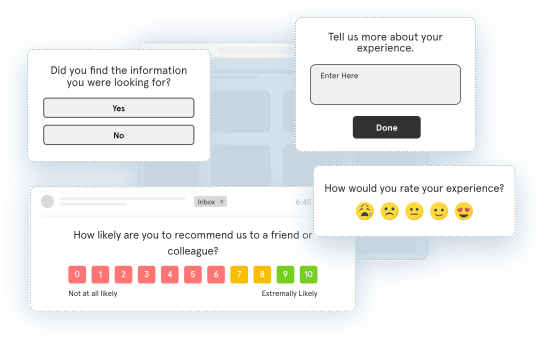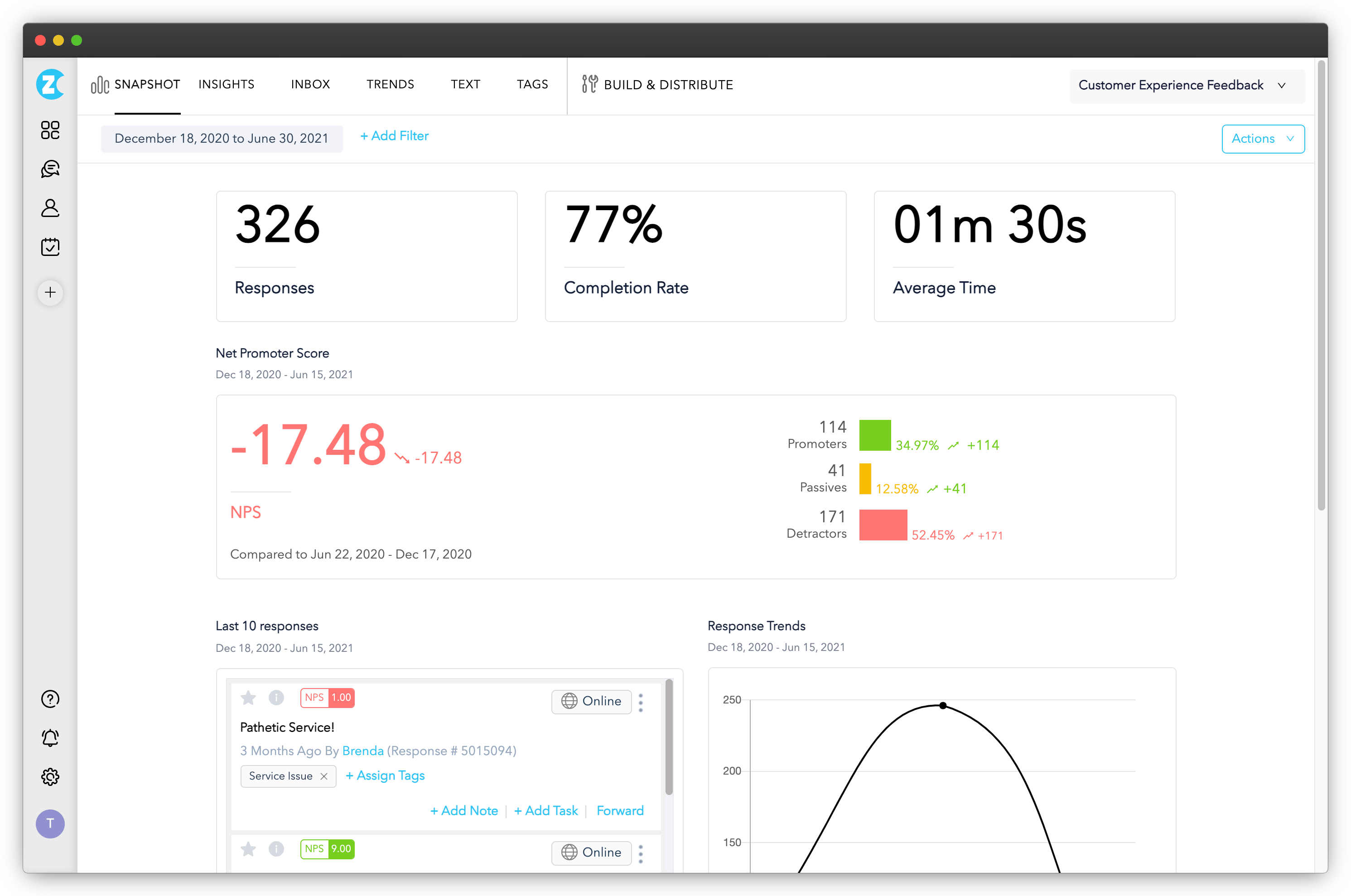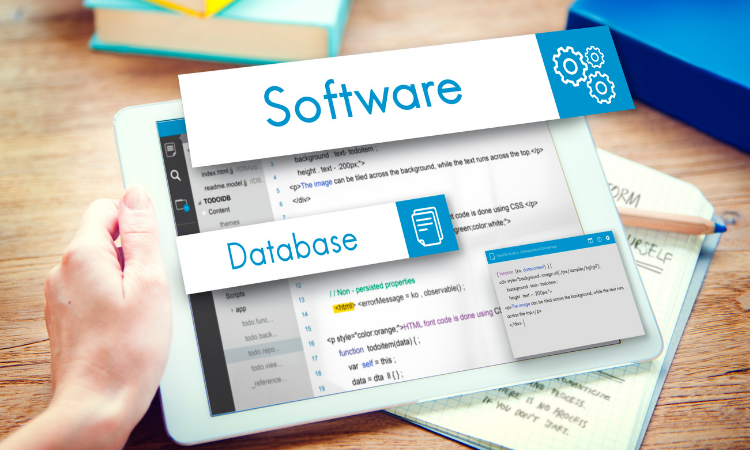At the core of shaping a brand's identity and credibility is an invaluable asset: customer experience (CX). This fundamental approach focuses on how businesses interact with their customers at every step. It covers all interactions, whether it's buying something or just getting in touch. Making these moments count is key.
When you provide a top-notch customer experience, your customers will literally become your marketing agents, and that too free of cost! Interestingly, most companies excelling in CX witness a notable revenue boost, often between 4% to 8%.
In this article, we'll explore customer experience in detail, discussing its significance for your business, how you can create an effective CX strategy, and methods that can improve the overall customer journey.
TL;DR
-
Customer experience is the complete perception a customer forms based on every interaction with a brand or business. It includes all touchpoints, from initial contact to post-purchase support, shaping overall customer satisfaction and loyalty.
-
A great customer experience leads to customer loyalty, reduces churn rates, and increases business with repeat customers. It also gives a competitive advantage while nurturing lasting customer relationships.
-
Developing an effective customer experience requires creating feedback loops, leveraging omnichannel experiences, personalization, AI utilization, opting for proactive approaches, and creating customer journey maps.
-
Utilizing CX metrics like Net Promoter Score (NPS), Customer Effort Score (CES), and Customer Satisfaction (CSAT), identifying reasons for customer churn, performing sentiment analysis, analyzing time to resolution, and conducting comparative tests can help you measure customer experience.
-
To improve customer experience, you can leverage customer experience surveys, automate workflows, utilize advanced reporting and analytics, capture in-moment feedback, and segment users.
-
With Zonka Feedback, you can easily create CX surveys, share via different communication channels, and analyze results to take action and close the feedback loop. You can sign up for a 14-day free trial or schedule a demo to explore its various features.
Elevate CX with Customer Feedback:fire:
Collect real-time, in-moment feedback at all touchpoints in customer journey and leverage feedback insights to transform customer experience.

What is Customer Experience?
Customer experience (CX) refers to the sum total of interactions and perceptions a customer has with a brand throughout their entire journey with that company. It encompasses every touchpoint and interaction a customer has, from initial awareness and consideration to the actual purchase, post-purchase support, and potential future engagement through various survey collection channels such as in-store experiences, online interactions, customer service, product feedback, and more.
A positive customer experience aims to meet or exceed customers expectations, boosting brand loyalty, advocacy, and repeat business. It involves understanding customer needs, providing seamless and consistent interactions, resolving issues promptly, and continuously improving based on customer feedback.
Customer Experience vs Customer Service
Even though both customer service and customer experience aim to ensure user satisfaction, they represent broader and distinct aspects of managing customer relations.
Customer service refers to the personalized care provided to customers through various channels like email surveys, in-person interactions, or online support, addressing their immediate needs and concerns. It's a crucial part of customer experience management but focuses mainly on solving problems and answering queries, whether through staff interactions or automated tools like chatbots.
On the other hand, customer experience (CX) is much broader and covers the entire customer journey. It covers not just customer service but also everything influencing how customers perceive a brand. This includes marketing, product design, brand values, aesthetics, and even external factors like reviews and media coverage.
Source: LinkedIn
Importance of Customer Experience
The importance of customer experience can be understood from the fact that 86% of consumers express their willingness to pay more for a superior customer experience. Moreover, about 64% are inclined to recommend a brand if they have had a positive experience.
Let's explore the benefits of customer experience and why it is important for your business.
1. Increases Sales
A better customer experience directly results in better sales. When customers have positive interactions and experiences with your brand, they're more likely to remain loyal and return for future purchases, reducing the need for costly customer acquisition efforts.
Additionally, satisfied customers often become advocates, spreading positive word-of-mouth recommendations, which significantly influence potential customers' decisions. A great customer experience not only encourages repeat business but also reduces churn rates, thereby increasing the overall customer lifetime value.
2. Enhances Cost Efficiency
Delivering a streamlined and enjoyable experience contributes to cost reduction across various fronts. This includes reducing expenses related to customer acquisition, retaining existing customers, and marketing your brand.
You must keep in mind that while a positive customer experience can increase brand loyalty among customers and advocacy, poor customer experience results in additional costs, as efforts are required to rectify the dissatisfaction and retain customers.
3. Boosts Profits
By prioritizing customer experience, you can enhance profit margins and generate higher earnings. Implementing a customer-centric approach promotes an environment where customers value the experience enough to pay premium prices.
Embracing this strategy not only drives business success but also aligns with customer expectations, contributing to sustained profitability.
4. Increases Customer Loyalty
Successful businesses often share a common trait—loyal customers who are exceptionally satisfied with their experience. It's noteworthy that approximately 65% of a company's business stems from existing customers alone.
Happy customers transform into brand advocates, actively promoting a product or service through positive word-of-mouth thereby increasing new customer acquisition and over time loyalty.
5. Reduces Customer Churn
A brand that consistently delivers exceptional customer experience facilitates enduring customer relationships. Enhanced customer experience increases customer lifetime value and significantly reduces the likelihood of them switching to competitors.
By creating a strong emotional connection and loyalty, companies offering superior experiences form a tough barrier against churn. Moreover, loyal customers tend to be more forgiving of occasional service hiccups and are more likely to remain committed to a brand, contributing to its long-term success.
What are Examples of Customer Experience?
Customers tend to come back when they feel heard and their expectations are fulfilled. This includes understanding what customers expect and then acting on their feedback using customer feedback tools and making necessary improvements. Let us look at some of the examples of customer experience across different industries.
-
Retail: In-store experiences, ease of navigation, product availability, checkout process, and post-purchase assistance.
-
Hospitality: Hotel check-in and check-out processes, room cleanliness, staff behavior, and personalized services.
-
Healthcare: Appointment scheduling, waiting times, quality of care, empathy of staff, and follow-up procedures.
-
Banking: Online banking experience, ease of transactions, waiting times in branches, and customer service quality.
-
Telecommunications: Service reliability, network coverage, ease of contacting customer support team, and resolution of issues.
What is a Positive Customer Experience?
Ensuring a good customer experience isn't about a one-size-fits-all approach. Each business and its customers are distinct. Yet, there are several common principles that underscore a positive customer experience. These include:
-
Understanding Customer Needs: Collect feedback using customer feedback software and data to understand customer pain points and preferences.
-
Training and Empowering Staff: Empower employees with skills and authority to handle customer queries effectively.
-
Optimizing User Experience: Focus on user-friendly interfaces and ease of navigation.
-
Consistent Branding: Ensure consistency in messaging, values, and service quality across all touchpoints.
-
Proactive Approach: Anticipate customer needs and communicate timely updates or solutions.
What Causes Bad Customer Experience?
While there can be numerous contributing factors, a bad customer experience can stem from various factors including:
-
Long Wait Times: Extended queues, slow response times, or prolonged waiting periods significantly contribute to poor customer experience.
-
Poor Service: Unhelpful, rude, or inadequately trained staff profoundly impact how customers perceive a business, often leaving them with a negative impression and poor customer experience.
-
Ineffective Communication: Communication gaps, delayed responses, or inadequate information shared with customers can lead to frustration and dissatisfaction, undermining their experience.
-
Product or Service Issues: Faulty product or service disruptions, or low-quality offerings often result in dissatisfied customers, impacting their perception of the brand and leading to dissatisfaction.
-
Lack of Personalization: Failing to tailor experiences to individual preferences or needs can leave customers feeling undervalued, diminishing their overall satisfaction and loyalty.
-
Inattentiveness to Feedback: Ignoring or poorly addressing customer complaints or feedback aggravates dissatisfaction, eroding trust and loyalty in the brand.
How to Create a Customer Experience Strategy?
A customer experience strategy is like a roadmap designed to ensure customers have great interactions every time they connect with your company. It involves understanding what customers need and want and making sure that everyone in the company works in tandem to achieve the business goal. This strategy helps in attracting and retaining customers by providing top-notch experiences.
Here are some suggestions to help shape your overall approach to creating customer experience strategies:
1. Create Feedback Loops
Encourage customers to share their thoughts and experiences through various digital channels, such as online surveys, feedback forms, or social media platforms. By actively collecting customer feedback and valuing user opinions, you gain invaluable insights into their needs and preferences.
Additionally, customer feedback often uncovers pain points, highlighting areas where your business can improve. Respond promptly to feedback, acknowledge their input, and take actionable steps to address their concerns. This engagement not only shows customers that their opinions matter but also demonstrates your commitment to their satisfaction, fostering a stronger and more loyal customer base.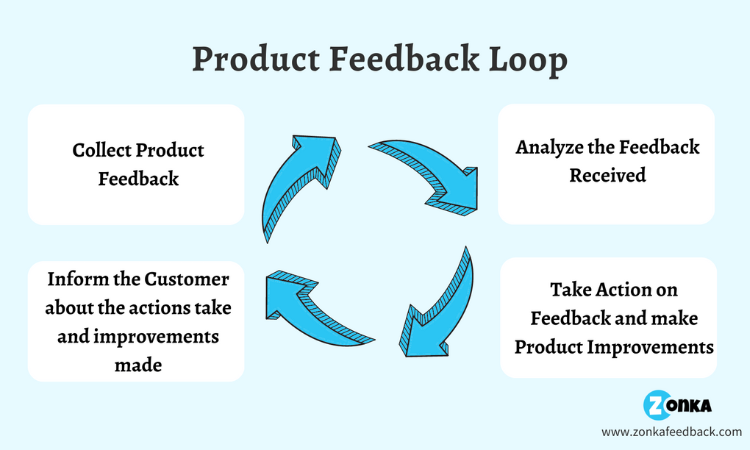
2. Create Omnichannel Experience
Ensure a consistent and smooth experience for customers across all touchpoints. Whether they're interacting with your website, or mobile app, or visiting your physical store, maintaining a unified brand message and service quality is key. For example, you can offer the same discounts or promotions both online and in-store.
3. Personalize User Experience
Personalizing the user experience involves adapting interactions to the customer's preferred contact method and offering tailored product recommendations based on past behavior. Too much automation or outreach that isn't personalized can lead to a consumer experience that is impersonal, disconnected, or generic.
By leveraging customer data to comprehend preferences and habits, you can swiftly address customer needs, offering targeted support and a more personalized experience.
For example, you can send customized product suggestions that align with past purchases or browsing history can enhance the shopping journey's relevance and overall customer experience. Similarly, personalizing email outreach by referring to customers by name adds a human touch and promotes more engaging interaction and positive client experience. Take it a step further by incorporating a digital business card as your email signature. Use the best digital card software that allows you to customize it with contact details and personalized links such as referral codes, discount coupons, or product pages to further engage recipients. If you need help creating the right user experience, consider hiring a UX Agency to help you improve your customer journey.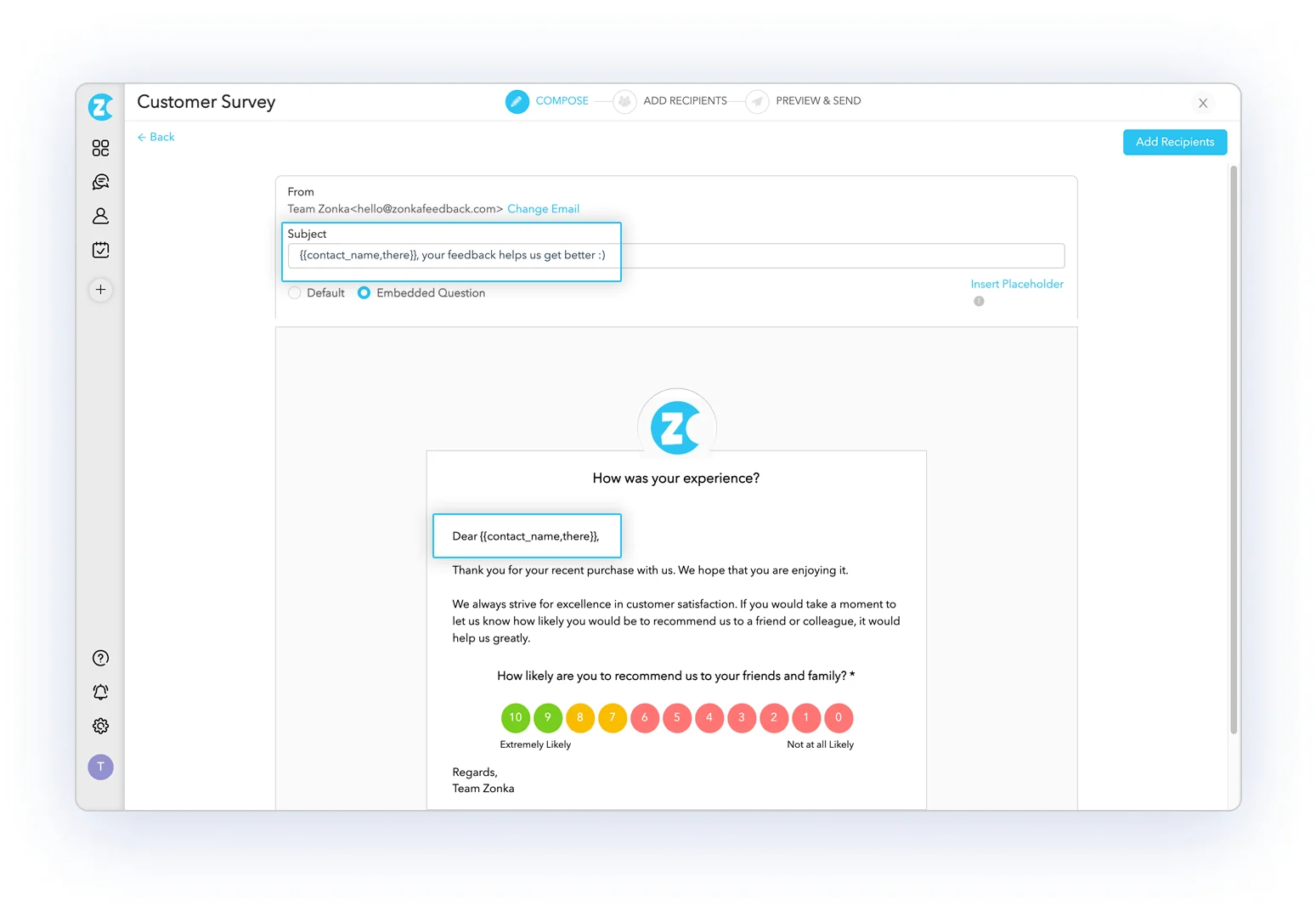
4. Utilize AI Effectively
Leveraging AI involves using chatbots and virtual assistants to streamline routine tasks, offer real-time aid, and enhance overall efficiency. These technologies analyze vast customer data, like purchase history, browsing behavior, or customers' interactions in the past, enabling personalized recommendations and targeted marketing.
Incorporate AI-driven customer experience solutions like chatbots for instant customer support. These bots can answer common queries or guide customers through simple tasks, providing timely assistance 24/7.
5. Offer Proactive Experiences
Creating a proactive customer experience means anticipating needs before they're expressed. By offering solutions preemptively, like providing guides to local attractions upon booking in the hospitality sector, you can enhance customer journeys.
Proactive gestures, such as targeted information and support before inquiries, cultivate customer centricity, ensuring customers feel supported throughout their experience.
7. Creating a Customer Journey Map
Building a customer journey map involves visualizing and understanding every touchpoint a customer encounters when interacting with your brand. This map outlines the entire customer experience, from initial awareness to post-purchase engagement, helping identify pain points, moments of delight, and opportunities for improvement.
By mapping out the customer's journey, you can gain an understanding of customer needs, emotions, and motivations at each stage. This, in turn, facilitates the implementation of targeted strategies to enhance these touchpoints, ensuring a seamless and satisfying customer experience throughout their journey with your brand.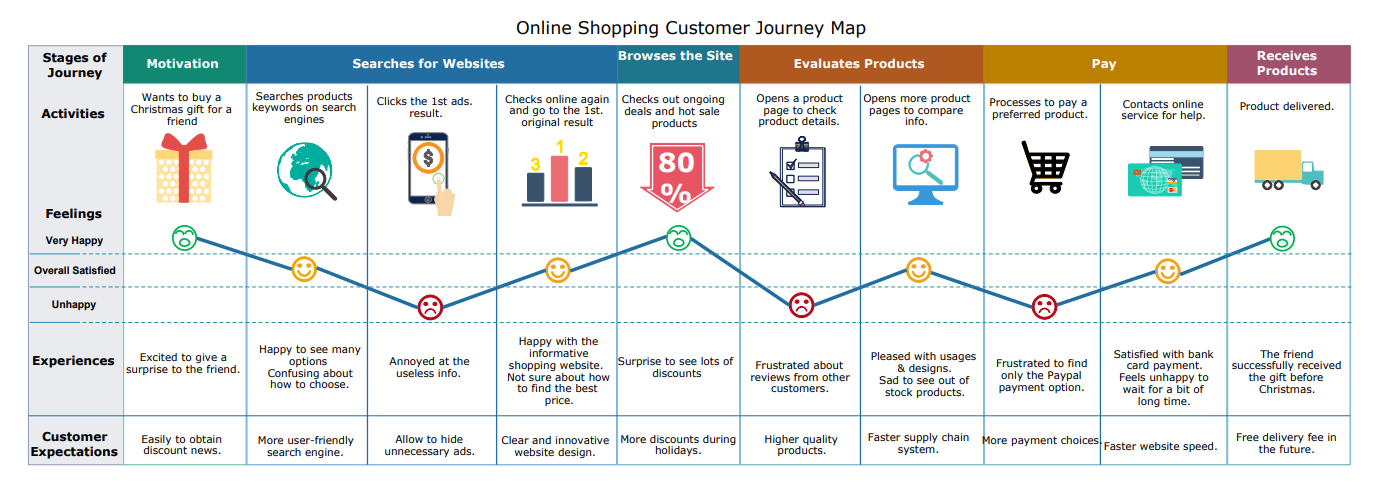
How to Measure and Analyze Customer Experience?
Once you have your customer experience strategy in place, you need to check if it is effective. By measuring your CX programs, you can track progress and determine if they are working effectively.
Let us look at some of the methods that can help you measure customer experience and get a holistic understanding of it.
1. Utilize CX Metrics
Utilizing quantifiable CX metrics through voice of customer tools enables ongoing tracking of its progression or regression. Here are some most popular key customer experience metrics widely utilized by CX professionals and customer relationship management (CRM) teams to monitor and evaluate customer experience across various stages of the customer journey.
-
Net Promoter Score: NPS or the Net Promoter Score is a customer loyalty score derived from asking customers how likely customers are to recommend your product/service to others. It's calculated by subtracting the percentage of detractors from the percentage of promoters.
-
Customer Effort Score: CES or the Customer Effort Score evaluates the ease of a customer's experience with a product/service. It measures the effort customers need to exert to accomplish a task or resolve an issue.
-
Customer Satisfaction Score: CSAT or Customer Satisfaction Score helps to measure customer satisfaction with a specific interaction or experience.
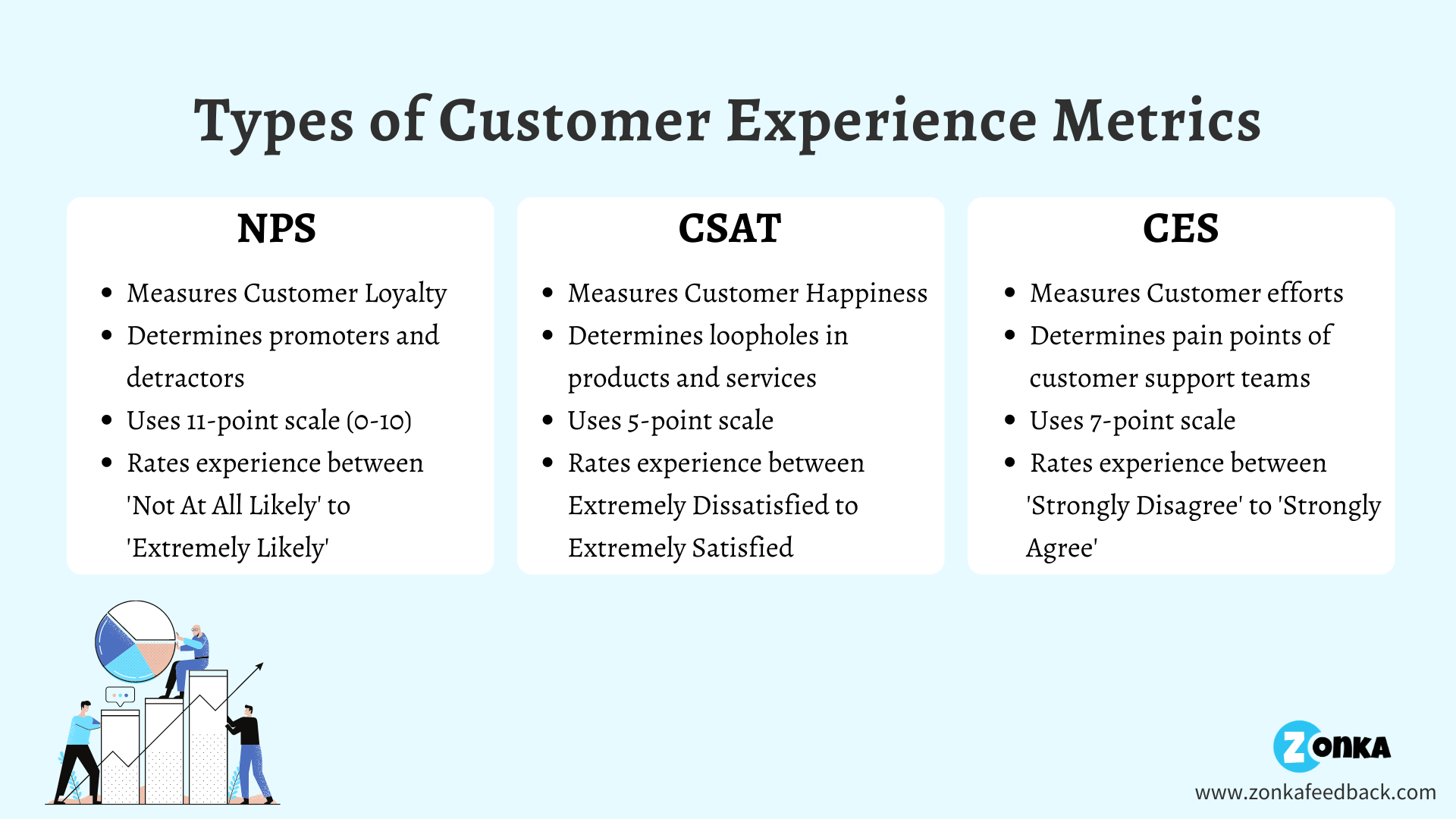
You can leverage these CX metrics to gain a comprehensive view of customer sentiment, enabling targeted improvements in specific areas. For example, analyzing CES might reveal pain points where customers face undue difficulty in completing tasks, such as a convoluted checkout process in an e-commerce platform. This insight prompts focused efforts to streamline processes, simplifying the checkout steps and reducing customer effort.
2. Identify Reasons for Churned Customers
Analyzing the reasons behind churn offers valuable insights into the effectiveness of your customer experience strategies. By examining why customers churn, you can gain an understanding of pain points or issues that negatively impact the customer journey.
For instance, through exit surveys, discovering that a substantial churn results from unresolved support issues highlights the need for improved customer service or streamlined issue resolution processes.
Moreover, churn analysis helps track customer trends in attrition rates, indicating whether the customer experience is improving or declining over time. If the churn rate rises, it signals potential issues that need immediate attention to prevent further customer departure.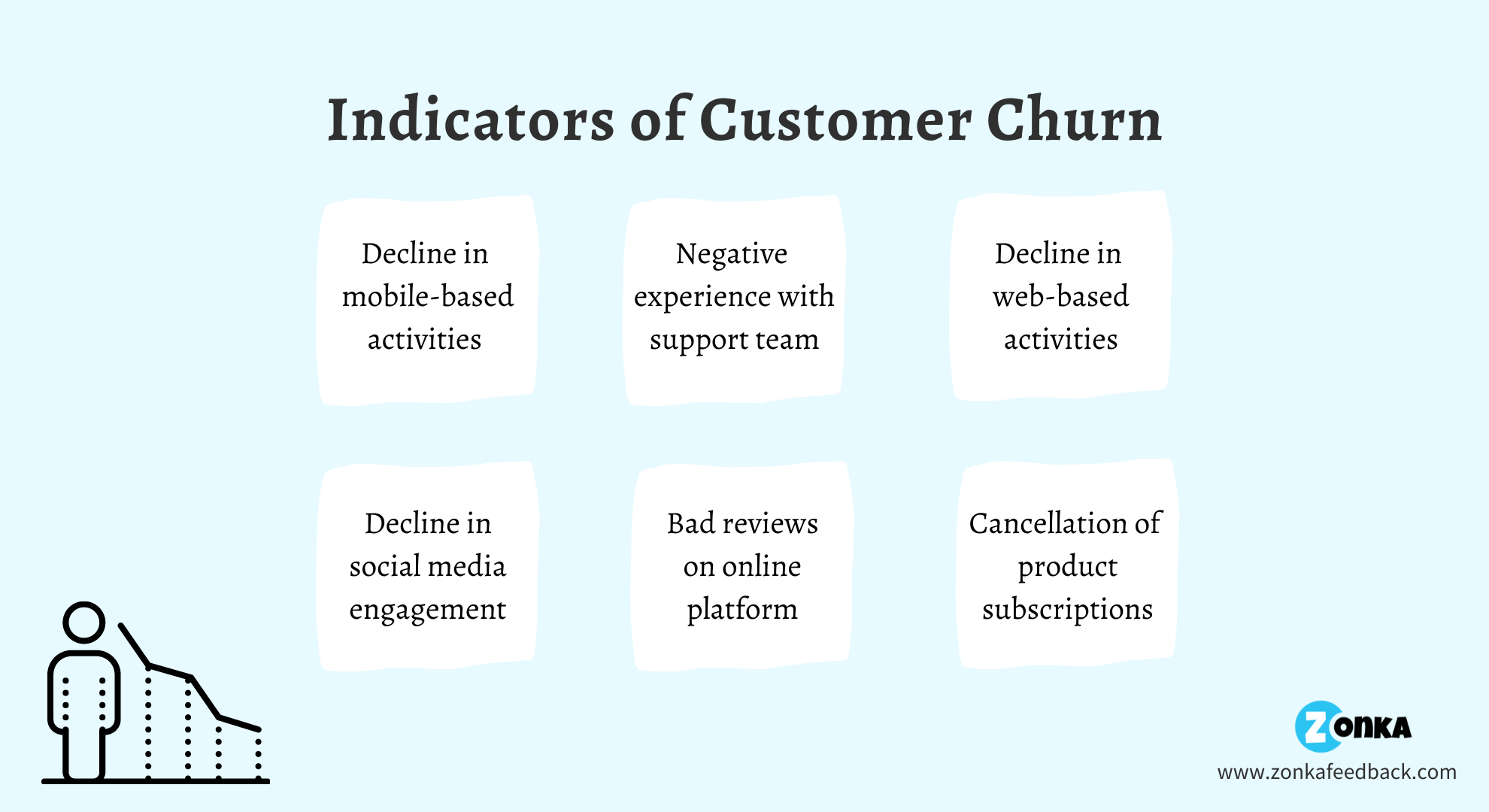
3. Perform Sentiment Analysis
Performing sentiment analysis aids in gauging customer experience by examining emotions and opinions within feedback, online reviews, and social media mentions. This method employs natural language processing to categorize sentiments as positive, negative, or neutral.
It unveils underlying reasons for customer satisfaction or dissatisfaction, identifying key pain points in the customer journey. Insights that you gather can guide improvements, benchmark against competitors, and drive personalized strategies, promoting better experiences aligned with customer preferences.
4. Analyze Time to Resolution (TTR)
Analyzing Time to Resolution (TTR) significantly measures customer experience by assessing how promptly customer issues are resolved. It acts as a barometer for customer service efficiency—a shorter TTR often indicates higher satisfaction.
Addressing prolonged TTRs helps streamline processes, ensuring prompt issue resolution, and ultimately fostering positive customer experiences aligned with quick problem-solving.
5. Conduct Comparative Tests
Performing comparative tests, like A/B experiments, compares different aspects of the customer journey or interfaces. This method evaluates variations to pinpoint which gives better results. By testing multiple approaches, such as website layouts, mobile apps designs or service processes, you can gather practical data to make informed decisions.
Identifying the more effective option empowers you to implement changes that noticeably enhance the overall customer experience, ensuring strategies are based on proven success rather than assumptions.
How to Improve Customer Experience?
Let’s look at some of the ways to improve customer experience that can also help you improve customer retention, increase revenues, and enhance the overall customer journey.
1. Develop a Clear CX Vision
Creating a distinct customer experience vision aligns your organization's objectives and brand promise with user expectations, directing all customer-centric company culture and efforts.
A well-defined CX vision not only sets the direction for your business but also unifies teams toward a common goal, ensuring that every interaction resonates with this core value, ultimately enhancing the overall customer journey.
2. Leverage CX Surveys
Employing surveys like NPS surveys, CSAT surveys, or CES surveys helps in understanding customer sentiment. Starbucks, for instance, utilizes feedback surveys to refine store experiences, menu offerings, and loyalty programs. These surveys provide crucial insights into satisfaction levels of customers and specific pain points, facilitating targeted improvements.
You can tailor surveys to specific touchpoints or segments to get focused insights. For example, a targeted CSAT survey after an online purchase gauges customer satisfaction levels regarding the shopping experience, pinpointing areas for website optimization or checkout process enhancements.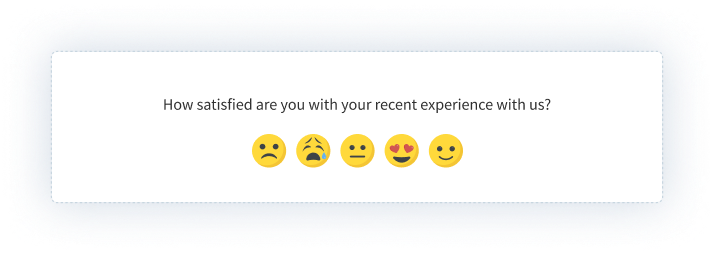
3. Automate Workflows
Automating workflows significantly enhances customer experience by streamlining processes, reducing response times, and ensuring consistency.
For instance, automated email responses acknowledging customer inquiries or purchases assure prompt acknowledgment, instilling confidence in customers. These workflows also enable personalized follow-ups, such as post-purchase emails with relevant recommendations, promoting customer engagement.
Moreover, automation eliminates manual errors and ensures tasks are executed seamlessly, allowing customer service teams to focus on complex issues, ultimately improving efficiency and delivering a smoother, more responsive experience for customers throughout their journey.
4. Utilize Advanced Reporting & Analytics
To understand user expectations, it is essential that you analyze customer behavior and preferences. Leveraging advanced reporting and analytics revolutionizes the customer experience by exploring behavioral patterns and preferences through a spectrum of reports. You can utilize an survey software that enables you to take:
-
Snapshot Report: Provides a quick overview of essential metrics and KPIs at a glance.
-
Insights Report: Offers in-depth analysis and detailed findings derived from data or customer interaction.
-
Trends Report: Uncovers evolving patterns and changes in customer behavior or market trends over time.
-
Tags Report: Categorizes and organizes data or customer interactions based on specific tags or labels for easy reference and analysis.
-
Text Analytics: Mines unstructured data from feedback, reviews, or social media to extract sentiments and key themes.
5. Capture In-moment Feedback
Gathering immediate feedback during customer interactions offers prompt insights for immediate enhancements. For instance, Uber's in-app trip ratings empower review quick responses to issues encountered during rides, ensuring swift resolutions. This real-time feedback mechanism allows agility in addressing concerns and facilitating ongoing service refinement.
By capturing in-moment real-time customer feedback, you not only get a chance to resolve issues promptly but also demonstrate attentiveness to your customers' needs. This strategy is crucial for companies aiming to proactively customize their offerings in line with evolving customer expectations.
6. Segment Users for Personalization
Segmenting customers based on behavior or preferences allows for tailored experiences. Spotify, for example, leverages user behavior to curate personalized playlists, enhancing user engagement and satisfaction.
Personalization based on segmentation creates a deeper connection with customers, catering to their unique needs. By using an online survey tool, you can conduct surveys and send them to a specific audience. For instance, you can employ segmentation to send an NPS survey exclusively to individuals who haven't responded in the past month and to those who have given score between 0 to 8.
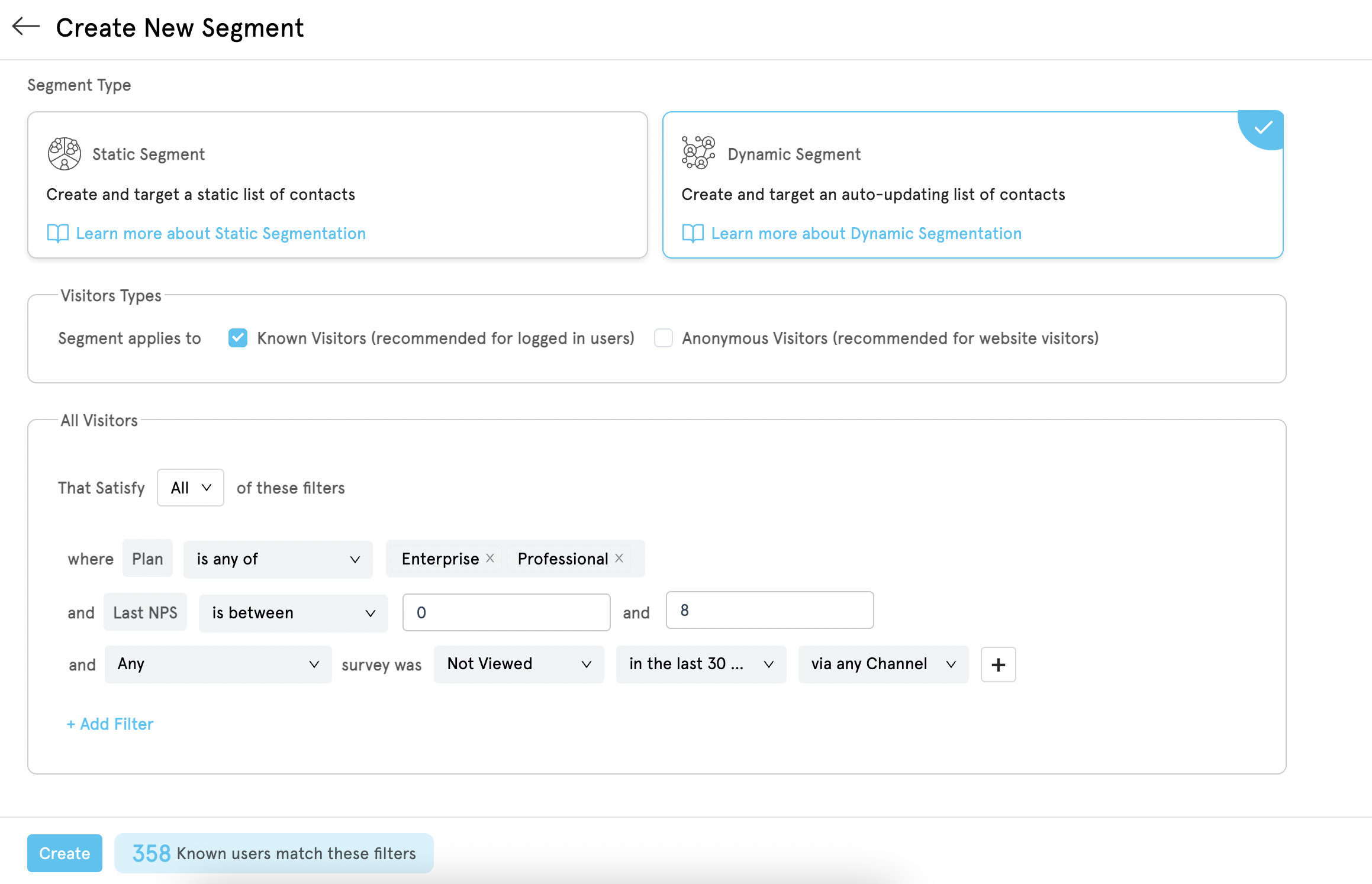
7. Leverage Multichannel Customer Satisfaction Strategy
A multichannel customer satisfaction strategy maximizes customer engagement by offering diverse interaction avenues. It integrates various platforms—online, in-store, and social media—ensuring consistent service delivery. For instance, Apple provides a seamless experience across its website, stores, and customer support, ensuring a consistent brand experience.
A cohesive multichannel strategy ensures customers receive consistent service and support, irrespective of the platform they choose to engage with. This unified approach across multiple channels ensures a consistent brand experience, enhancing overall customer experience and promoting loyalty.
8. Measure ROI
Measuring ROI in customer experience aligns initiatives with tangible business outcomes. It quantifies the impact of CX improvements on metrics like revenue or retention, guiding resource allocation. This data-driven approach informs strategic decisions, optimizing investments toward high-impact CX initiatives.
ROI measurement completes the feedback loop, enabling iterative enhancements and fostering a customer-centric culture. It ensures that efforts are directed effectively, demonstrating the value of CX improvements in driving business success and elevating customer experiences.
Conclusion
Customer experience is the cornerstone of business success, and as a company, your aim should be to offer the best customer experience. Enhancing customer experience directly impacts profitability through increased sales, customer retention, and positive word-of-mouth referrals. Furthermore, a better reputation attracts new customers while solidifying trust, driving long-term success and sustained growth for your company.
By utilizing a powerful customer experience software tool like Zonka Feedback, you can streamline data collection, analyze customer feedback, and implement tailored strategies that resonate with customer preferences. With features like customizable survey templates, user segmentation, workflow automation, and multi-channel feedback collection, you can easily enhance customer experiences and cement your brand's reputation for exceptional service.
Sign up for a 14-day free trial and get started to experience how it works for your business!

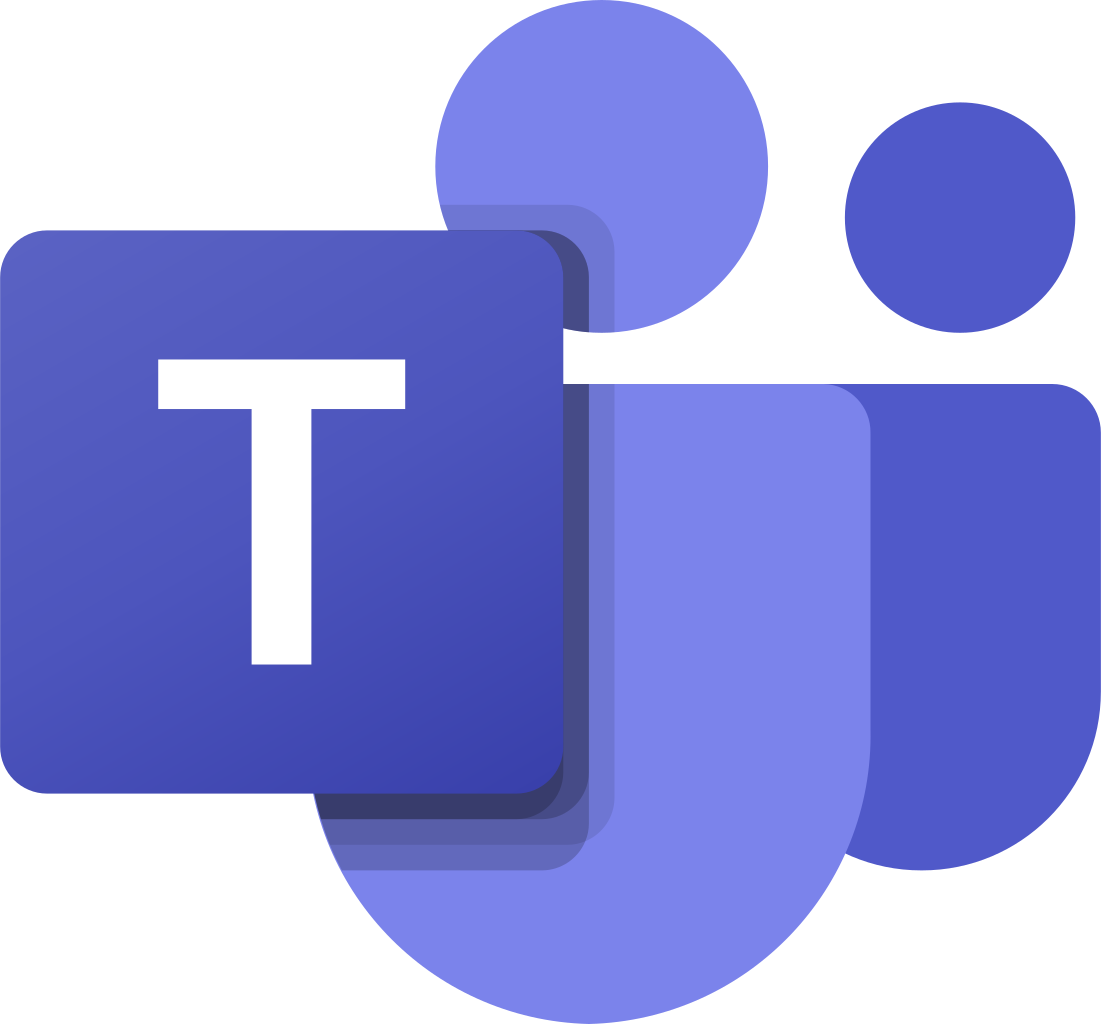 MS Teams
MS Teams